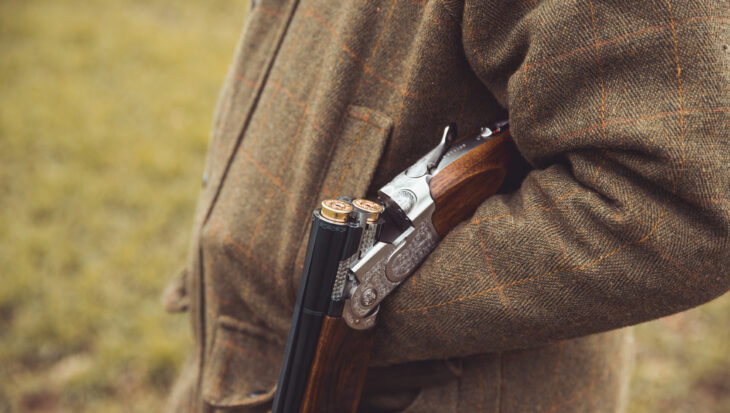Ban on the use of lead shot – finally!
Posted 10 Jul 2025

Posted on the 5th April 2006
From The Guardian (05/04/06):
With thirty horses having died at Aintree since 1997, is it time the National was scrapped for being too cruel? Andrew Tyler, Director of Animal Aid, says yes. Peter Webbon, Chief Executive of racing's regulatory authority, says no
The Grand National is a rarity – a “sporting” event embedded deep in the culture that must defend itself against accusations of cruelty and exploitation. Its advocates lapse into misty-eyed sentiment when fending off opponents. But at the core of the enterprise are hard-nosed calculations. An estimated £250m was taken by the bookies on the back of last year’s race, added to which are ground receipts, sponsorship, TV syndication and all the side deals involving use of the brand.
The National needs a sales pitch – which is that this is the ultimate test of rider and horse, the Everest of jump racing, and that the horses are the monarchs of the equine world, cosseted and pampered. They wouldn’t do it if they didn’t love it. Really?
While jump horses were once bred to cope with the rigours of National Hunt racing, the modern industry concentrates on breeding a lighter-boned, speedier animal for the Flat. The less successful Flat racers, or those showing an aptitude for clearing fences, are consigned to jump racing. But because they are fine-tuned for speed rather than skeletal strength, they risk fatal injury when they do fall – a common occurrence at Aintree. If a third of the 40 starters finish, that’s a result.
The carnage at the recent Cheltenham Festival supports the argument that modern jump horses cannot cope with such deliberately taxing courses. Nine horses died and all came from Flat racing stock. But then horses die routinely at Cheltenham. It is the most lethal course in the country, with 36 dead in 82 days of racing. Aintree comes a close second. Thirty horses have perished during the three-day Grand National meeting since 1997.
Many of those deaths remain vivid in my mind – Goguenard, in 2003, falling several feet from a fence on to his back and a jockey landing on his stomach. He was trained by Sue Smith, who also trained The Last Fling. He broke his back the year before – a race in which Manx Magic fractured his neck. They also die on Aintree’s fast Mildmay course – Strong Promise brought to his knees by the stiffness of the 14th fence, turning over on landing and breaking his neck. A fellow runner was Lake Kariba. He finished exhausted and minutes later collapsed and died of a heart attack.
There are varied attempts to conceal the fact as well as the significance of these deaths. The camera looks away; the print media find no space for them. They are buried under outpourings of “grief” and “astonishment” that horses should perish from broken limbs and heart attacks and haemorrhages – even though around 375 horses die every year and many more that fail to make the grade or can no longer deliver prizes and glory are disposed of.
But what of the Grand National course itself? It is a deliberately punishing and hazardous event: longer than any other (four miles and 856 yards) and presenting 30 uniquely high and awkward obstacles. They feature perilous drops, ditches and sharp turns. Many of the horses will have encountered nothing like it before. Proponents of the race can’t have it both ways, billing it as a challenge like no other while saying – as horses continue to die – that it is benign for the equine participants. The Grand National is a cruel spectacle. It is time to bury it.
The National is a supreme test of courage, athleticism and stamina for horse and jockey. As with all sports it is not without risk, but racing works hard all year round to ensure that every precaution is taken to minimise the risk to horses.
Horses are selected for the National on the basis of their stamina and jumping ability and an expert panel scrutinises every horse to ensure that the its form supports its entry. With regards to the course, we carefully monitor the fallers at every fence and have no reason to believe that any of the fences carries a particular risk. Individual fences have been modified to minimise the risk that they pose, with annual input from the RSPCA. Two notable improvements include the ditch on the landing side of Becher’s Brook being filled in and the approach to the Canal Turn being modified to reduce crowding on the inner rail.
There are two aspects to safety in jump racing – the ground and the construction of the obstacles. We know that the risk of injury increases with faster ground and therefore, from the point of view of safety, prefer to see ground no faster than good. This is not always easy to achieve since racecourses are so dependent on the weather, but Aintree will produce the safest possible ground for the National meeting. The ideal fence is one that looks challenging but encourages a horse to jump confidently and does not penalise it if it makes a mistake. The National fences achieve this since although they are higher than average – the top 50% is made up of loose material.
Do horses enjoy racing? Horses are herd animals. They feel most at ease when they are in a group and you only have to observe horses in a field to see that they will voluntarily “race” around. Loose horses continue in a race and often continue to jump the obstacles. Moreover, racehorses are some of the most pampered and cared for animals.
What is racing doing for the horses? The Levy Board, racing’s funding body, invests about £1.5m a year in veterinary research and education. A number of epidemiological studies have identified risk factors in racing and have allowed us to intervene to make racing safer, eg by introducing Flat races for younger jump-bred horses and by modifying hurdle design. The standards for equine facilities at the racecourse are continuously being raised to ensure a safe and comfortable surrounding for horses. The HRA’s veterinary officers manage a database that contains details of every fall or injury on British racecourses, making it possible to identify problems at a particular fence or racecourse and to take action, where necessary, to solve them.
We monitor injuries and fatalities as a matter of routine and the high number of fatal injuries at Cheltenham this year will be subject to particularly close inspection. Together with our welfare partners, the RSPCA and the International League for the Protection of Horses, we will study every possible explanation to ensure that if a recurrence is preventable, we will prevent it. Animal Aid does not just want to see the National stopped but jump racing as a whole, and we are aware that they could argue that the death of any horse in the race was evidence for their cause.
Posted 10 Jul 2025

Temperatures are rising and it’s time to get outdoors, enjoy the weather and tuck into some delicious vegan food! Thanks to an abundance of plant-based options now available, there’s an alfresco option for every tastebud...
Posted 09 Jul 2025
